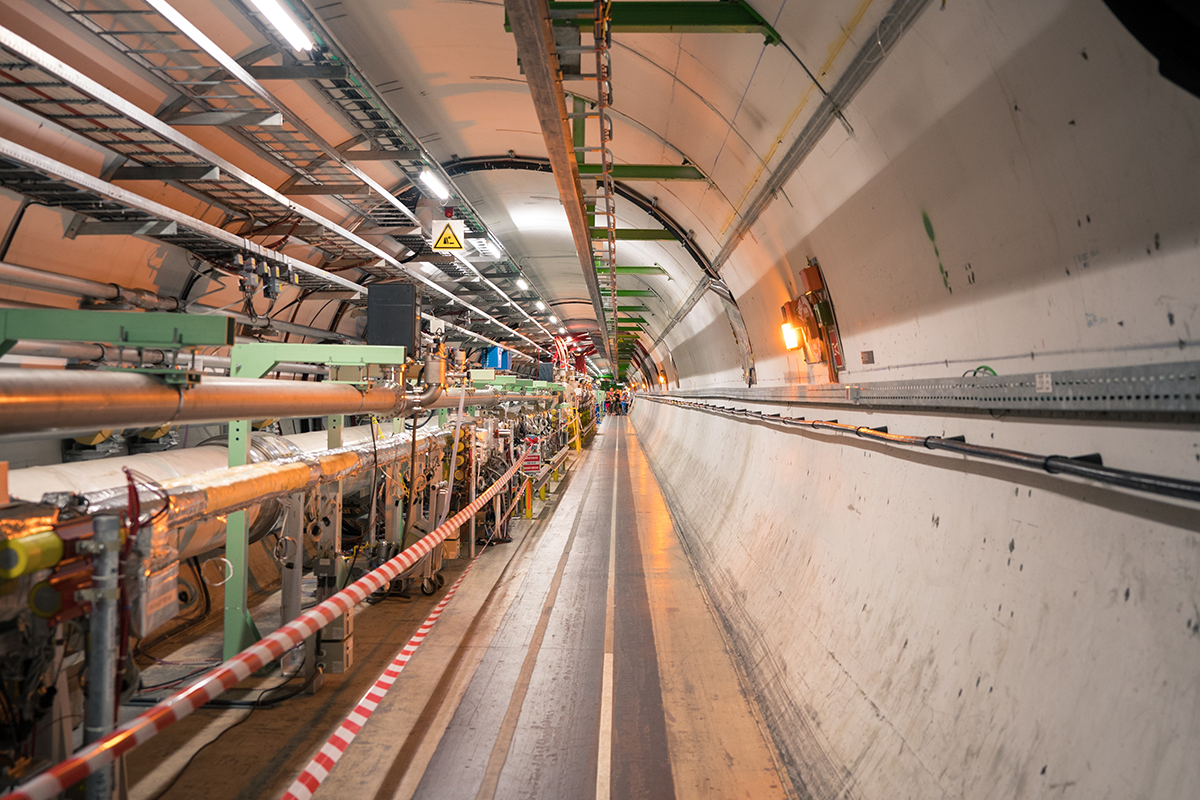Particle Prowess
Alumna Elise Chávez conducts high-energy experimental physics using the world’s most powerful collider

While we’re often encouraged to look at the big picture, Elise Chávez thinks small.
Chávez, a Florida State Department of Physics alumna, is a particle physicist, working at the nano level to examine and experiment with subatomic particles — electrons, protons, neutrons — the smallest building blocks of the universe.
Although she initially wanted to follow in her father’s military footsteps and pursue a career as a Navy fighter pilot, Chávez’s high school chemistry class clarified her future focus.
“When learning about atoms, I was more interested in electrons, protons and neutrons. I learned about more particles, which sparked an interest in particle physics,” Chávez said. “I also enjoyed explaining the world around me through math, which I was quite good at, so I chose to major in physics.”

Once at FSU, she reveled in coursework and became fascinated by the subatomic world and the Large Hadron Collider, the world’s largest and highest-energy particle collider. The LHC lives more than 300 feet underground at CERN, the European Organization for Nuclear Research, in Geneva, Switzerland, and was built in collaboration with over 10,000 scientists, hundreds of universities and laboratories, and more than 100 countries. Its mission is to use the world’s largest and most complex scientific instruments to probe the fundamental structure of particles that make up the universe and everything within it.
“Early on, students heard from a panel of professors discussing their research. One panelist was Andrew Askew, a member of FSU’s High Energy Physics group, an amazing educator and an incredible adviser. He worked on the Compact Muon Solenoid, part of the LHC, and hearing his experience seemed like fate, given my interests,” Chávez said. “I began working with him at the semester’s end and completed two projects before conducting my thesis for the FSU Honors Program.”
These projects included researching remotely on the LHC collider so Chávez could gain experience conducting complex analyses. Her first project included characterizing dead spots in the first layer of the CMS, the electromagnetic calorimeter. Dead spots can skew calculations, as energy is detected by only one of the CMS trackers, and the identification of these zones is crucial for correct data. The second project involved determining the mass distribution of photons produced in a collision, a tricky task for undergraduates.
“Many undergrads in particle physics feel dwarfed by the scope of things, especially by the five story-high detector and highest-energy collider in the world. Elise was never intimidated by the scale, and that’s pretty unique,” said associate professor of physics Andrew Askew. “She appreciated the scale, worked hard to understand the research and had a quiet confidence.”
Chávez’s research — then and now — is similar to that of a data scientist. The LHC is turned on, particles are shot at each other at exponential speeds, collisions happen, and data is recorded via advanced detectors. Data is filtered down and physicists write programs to calculate properties of the collision, such as what particles were seen, particles’ specific masses, and if dark matter was observed. Because her work is data-driven, Chávez can conduct research on the LHC from anywhere in the world.
Before graduating in 2020, Chávez participated in Sigma Pi Sigma, the Society of Physics Students, and earned the Clara Kibler Davis Scholarship in Mathematics, a scholarship awarded to increase diversity in STEM, which ignited a passion for increasing representation in the field. She also interned for three summers at the Fermi National Accelerator Laboratory, located near Chicago. Fermilab, funded by the U.S. Department of Energy, is America’s national accelerator laboratory specializing in high-energy particle physics.
“I’ve always wanted to work at Fermilab,” she said. “I first interned through the lab’s Summer Internship in Science and Technology in 2019, which is designed to increase opportunities for underrepresented minority groups in science and engineering. I was assigned a Fermilab physicist supervisor who created a project for me to work on throughout the summer. I also wrote papers, gave presentations, and made posters for each internship.”
She then learned about the Graduate Degrees for Minorities in Engineering and Science fellowship program providing similar opportunities in advanced education. After earning the fellowship, Chávez continued working for Fermilab throughout Summer 2020 before starting graduate studies at the University of Wisconsin – Madison, where she earned an Advanced Opportunity Fellowship.
Chávez’s passion for improving diversity in STEM fields has grown alongside her research on the CMS, as she interned for Fermilab again in Summer 2021. After graduation, she hopes to become a staff scientist at Fermilab or CERN, and she envisions a field composed of individuals who represent every different way one can be a physicist.
“I’ve become an advocate for women and minorities in my department. FSU’s physics program is quite diverse, and I hope to make this a reality elsewhere,” Chávez said.
McKenzie Harris is pursuing a master’s in media/communication studies. She earned a bachelor’s in English with a concentration in editing, writing and media in 2020.

